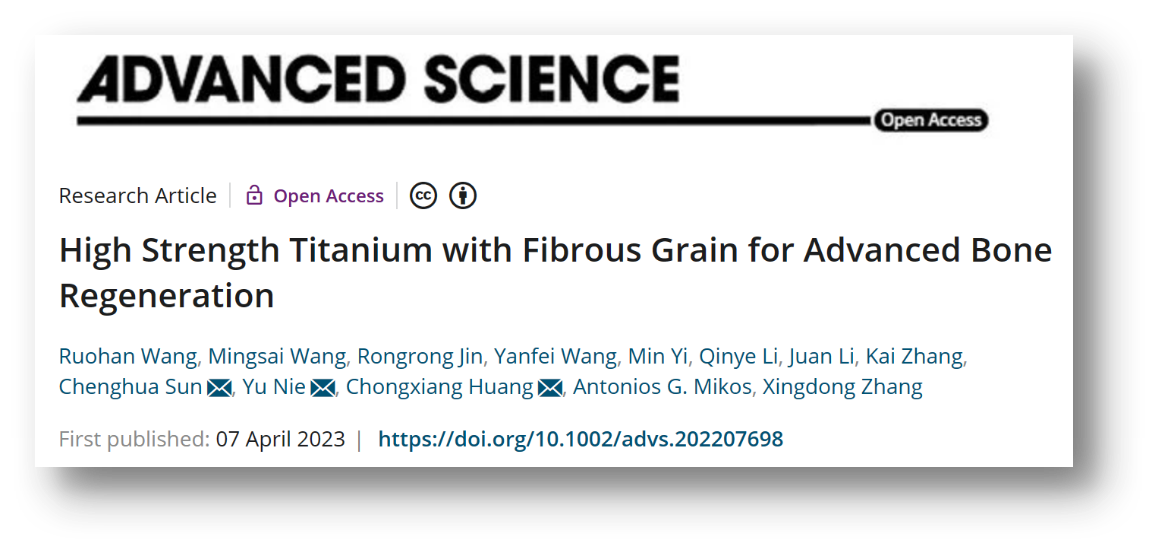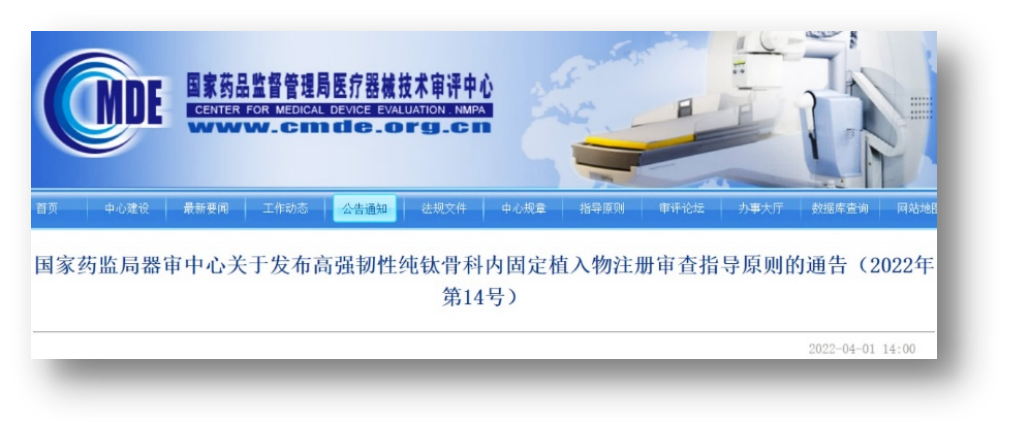In collaboration with Prof. Chenghua Sun of Swinburne University of Technology, Australia, the research team of Prof. Chongxiang Huang and Prof. Yu Nie from theNational Engineering Research Centre for Biomaterials (NERCB) and the School of Aeronautics and Astronautics (SAA)published a research paper titled "High Strength Titanium with Fibrous Grain for Advanced Bone Regeneration" in Advanced Science (Adv. Sci. 2023, 2207698) in April. Sichuan University is the first work unit of this paper. The first authors are Ruohan Wang, a Class 2019 doctoral student of the NERCB, and Mingsai Wang, a Class 2019 doctoral student of theSAA, SCU.Chongxiang Huang and Yu Nie, and Chenghua Sun are the co corresponding authors.
Utilizing self-developed high-strength titanium, the team has developed high-performance titanium bone needles, bone nails, intramedullary nails, etc. , forming the core technology of high-end titanium for medical products. It has obtained 11 Chinese patents and one Japanese patent. The Center for Medical Device Evaluation, NMPA published, in April 2022, the "Guiding Principles for the Registration and Review of High Strength Titanium Orthopedic Internal Fixation Implants" written by the research team. The guide lays the foundation for the entry of high strength titanium orthopedic implant products into the market.


“Pure titanium is widely used in clinical implants, but its bioinert properties (poor strength and mediocre effect on bone healing) limit its use under load-bearing conditions. Modeling on the structure of collagen fibrils and specific nanocrystal plane arrangement of hydroxyapatite in the natural bone, a new type of titanium (Ti) with a highly aligned fibrous-grained (FG) microstructure is constructed. The improved attributes of FG Ti include high strength (≈950 MPa), outstanding affinity to new bone growth, and tight bone-implant contact. The bone-mimicking fibrous grains induce an aligned surface topological structure conducive to forming close contact with osteoblasts and promotes the expression of osteogenic genes. Concurrently, the predominant Ti(0002) crystal plane of FG Ti induces the formation of hydrophilic anatase titanium oxide layers, which accelerate biomineralization. In conclusion, this bioinspired FG Ti not only proves to show mechanical and bone-regenerative improvements but it also provides a new strategy for the future design of metallic biomaterials.” (Abstract)
https://onlinelibrary.wiley.com/doi/10.1002/advs.202207698
